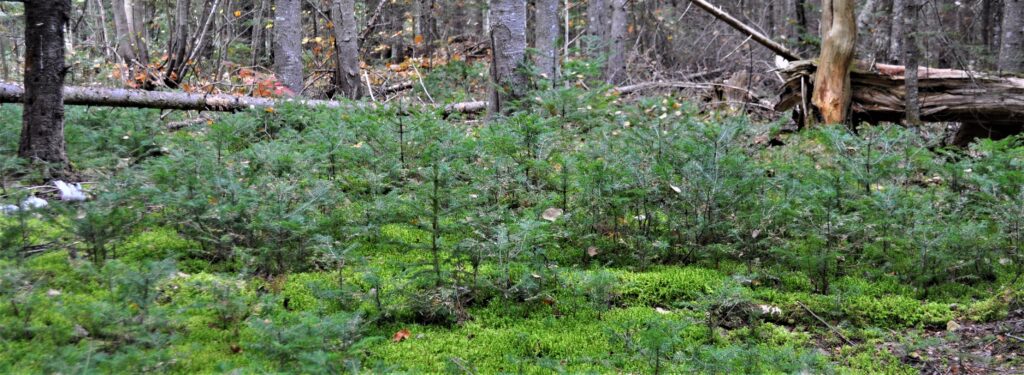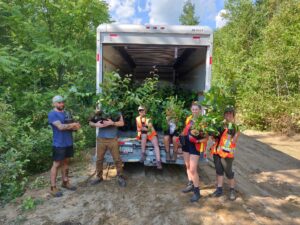Many woodlot owners are wondering how their forests will change over the next 50 years, with predictions of climate warming and changes to precipitation regimes.
How will the tree species we have respond to such changes?
Is there anything we can do to help our forests become more climate-resilient?

This fall, NWAI has been connecting with woodlot owners in the watershed to discuss forest management practices that support resilient and healthy forested ecosystems.
There are many excellent resources available for landowners that have been produced by our partner organizations. One such resource is the engaging and informative video series, “Our Changing Forest,” produced by the NB Federation of Woodlot Owners and their partners (Community Forests International, UNB, and the NB Department of Natural Resources and Energy Development).
This video series is the perfect first step to understanding how your forest might change and how you can help it to become more resilient.
The video series is divided into three parts:
Part 1 of the video series covers the general changes to forest composition expected for this region:
White spruce and balsam fir are not predicted to do well in the face of the changing climate, whereas white pine and red oak are some of the emerging “superhero trees.” The more diverse a forest stand, the more likely it will have some species that will be resilient – complexity is correlated with the ability to adapt to changing conditions.
Part 2 details the predictions of how various species will fare with climate change:
The viewer is taken to three different stands of trees (a black spruce dominated site, mature mixedwood, and a balsam fir dominated stand), and is guided through an assessment of the risk of these stands due to climate change. In the latter two stands, we learn that if balsam fir is a prominent component of the overstory and understory, the stand is at a higher risk from climate change. Balsam fir is sensitive to extremes in weather, is susceptible to pests, and is vulnerable to wind events. If the regeneration in a forest stand is predominantly balsam fir, the stand may be stuck in a “successional loop” and may not move to a more resilient and diverse forest type naturally.

Part 3 of the series takes a deep dive into three stand types, with recommendations for management options to improve carbon storage and create resilience.
Balsam fir-dominated stands – a common situation in many New Brunswick forests. To break the cycle of balsam fir regeneration and improve resilience, the foresters recommend planting other species (like acorns from red oak trees) and gradually removing the balsam fir in the overstory to create an irregular, multi-aged stand.
The second and third stand types covered include Mature mixedwood and Younger mixedwood stands. The recommendations here include leaving the more resilient species (e.g., red maple, red oak) and thinning the spruce and fir.

The video series encourages landowners to understand what species are present in their forests, and to consider the broad spectrum of management options available rather than the conventional recommendations of clearcutting and short-rotation softwood production. A focus on maximizing softwood timber supply could put forest owners in a vulnerable situation when the changing climate is considered.
For a more detailed description of management interventions to adapt to climate change, landowners can consult the silvicultural prescriptions in this companion document: Climate Change Resilience and Carbon Storage: Silvicultural Prescriptions for the Acadian Forest Regio

